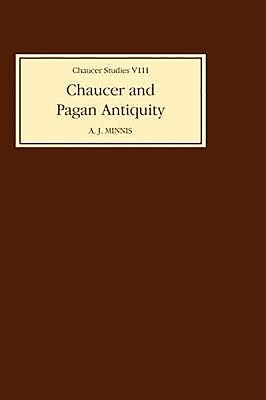
- We will send in 10–14 business days.
- Author: Alastair J Alastair J Minnis
- Publisher: Boydell & Brewer
- ISBN-10: 0859910989
- ISBN-13: 9780859910989
- Format: 15.6 x 23.4 x 1.3 cm, hardcover
- Language: English
- SAVE -10% with code: EXTRA
Reviews
Description
Professor Minnis argues that the paganism in Troilus and Criseyde and The Knight's Taleis not simply a backdrop but must be central to our understanding of the texts. Chaucer's two great pagan poems, Troilus and Criseyde and The Knight's Tale, belong to the literary genre known as the `romance of antiquity' (which first appeard in the mid 12th century), in which the ancient pagan world is shown on its own terms, without the blatant Christian bias against paganism characteristic of works like the Chanson de Roland, where the writer is concerned with present-day rather than classical forms of paganism. Chaucer's attitudes to antiquity were influenced, but not determined, by those found in the compilations, commentaries, mythographies and history books which we know that he knew. These sources illuminate the manner in which he transformed Boccaccio. Much modern criticism has concentrated on the medieval veneer of manners and fashions which are ascribed to the heathen protagonists of Troilus and The Knight's Tale; Dr Minnis examines the other side of the coin, Chaucer's historical interest in cultures very different from his own. The paganism in these poems is not mere background and setting, but an essential part of their overall meaning.
EXTRA 10 % discount with code: EXTRA
The promotion ends in 18d.18:49:09
The discount code is valid when purchasing from 10 €. Discounts do not stack.
- Author: Alastair J Alastair J Minnis
- Publisher: Boydell & Brewer
- ISBN-10: 0859910989
- ISBN-13: 9780859910989
- Format: 15.6 x 23.4 x 1.3 cm, hardcover
- Language: English English
Professor Minnis argues that the paganism in Troilus and Criseyde and The Knight's Taleis not simply a backdrop but must be central to our understanding of the texts. Chaucer's two great pagan poems, Troilus and Criseyde and The Knight's Tale, belong to the literary genre known as the `romance of antiquity' (which first appeard in the mid 12th century), in which the ancient pagan world is shown on its own terms, without the blatant Christian bias against paganism characteristic of works like the Chanson de Roland, where the writer is concerned with present-day rather than classical forms of paganism. Chaucer's attitudes to antiquity were influenced, but not determined, by those found in the compilations, commentaries, mythographies and history books which we know that he knew. These sources illuminate the manner in which he transformed Boccaccio. Much modern criticism has concentrated on the medieval veneer of manners and fashions which are ascribed to the heathen protagonists of Troilus and The Knight's Tale; Dr Minnis examines the other side of the coin, Chaucer's historical interest in cultures very different from his own. The paganism in these poems is not mere background and setting, but an essential part of their overall meaning.


Reviews